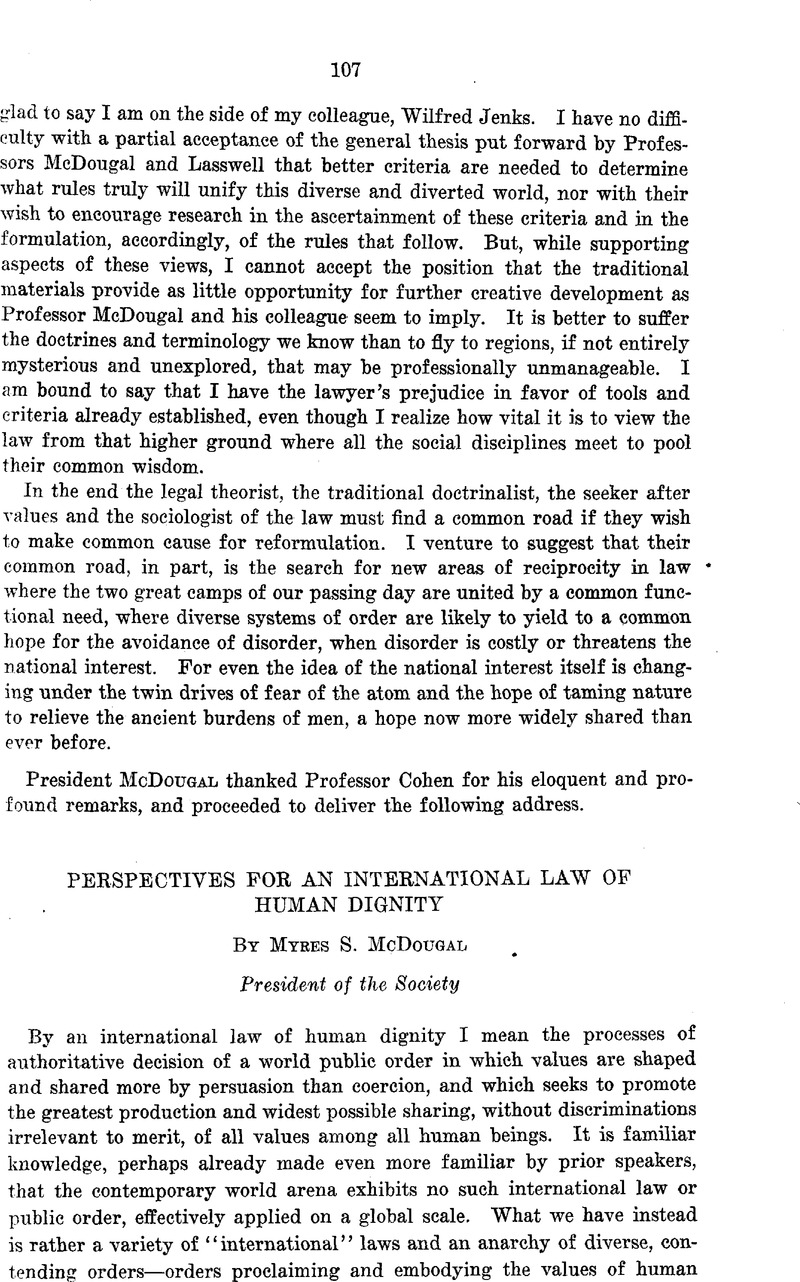No CrossRef data available.
Published online by Cambridge University Press: 27 February 2017

1 U. S. Department of State, Papers Eelating to the Foreign Eelations of the United States, 1930, Vol. I, p. 394.
1 Some of the characteristics of this struggle, and attitudes of totalitarians toward the use of force, are reviewed in Strausz-Hupé; and Others, Protracted Conflict (1959); Emerson and Claude, “The Soviet Union and the United Nations,” 6 International Organization 1 (1952); Hilsman, On NATO Strategy, in Military Policy Papers 1 (Washington Center of Foreign Policy Research, December, 1958).
2 The theme is developed in Jenks, The Common Law of Mankind (1958).
3 Relevant history and appraisal are offered in Garthoff, “The Concept of the Balance of Power in Soviet Policy-Making,” 4 World Politics 85 (1951); Aaron and Reynolds, “Peaceful Coexistence and Peaceful Cooperation,” 4 Political Studies 281 (1956); Pinto, “International Law and Coexistence,” 82 Journal du Droit International 307 (1955). Indication of how advocates of freedom may be misled appears in Panchsheel, The Publications Division, Ministry of Information and Broadcasting, Government of India (July, 1957). See also Bozeman, “India's Foreign Policy Today,” 10 World Politics 256 (1958).
4 Schlesinger, Soviet Legal Theory, Ch. 10 (2d ed., 1951).
5 Northrop, The Taming of the Nations 259 et seq. (1953). Other statements by Professor Northrop appear in “Contemporary Jurisprudence and International Law,” 61 Yale Law Journal 623 (1952); Ideological Differences and World Order (1949).
6 Most recently in “The Identification and Appraisal of Diverse Systems of Public Order,” 53 A.J.I.L. 1 (1959).
7 King, “The Rationale of Agreement between Nuclear Powers: A Method of Analysis,” in East-West Negotiations 38 (Washington Center of Foreign Policy Research, 1958).
8 A more comprehensive statement of some of these points appears in MeDougal, “The Policy-Science Approach to International Legal Studies,” in International Law and the United Nations (Eighth Summer Institute, University of Michigan Law Sehool, June, 1955).
9 Cf. Lasswell, “Clarifying Value Judgment: Principles of Content and Procedure,” 1 Inquiry 87 (1958).
10 In private communication, quoted by permission.
11 For illustration in some detail, see McDougal and Pelieiano, “Legal ^Regulation of Eesort to International Coercion: Aggression and Self-Defense in Policy Perspective,” 68 Yale Law Journal 1057 (1959).
12 Excellent statement of the fallacies we would expose appears in Schiffer, The Legal Community of Mankind (1954).
13 Note 2 above, at 139.
14 McDougal and Burke, “Crisis in the Law of the Sea: Community Perspectives versus National Egoism,” 67 Yale Law Journal 539, 568 (1958).
15 “The Impact of International Law Upon National Law: A Policy-Oriented Perspective,” 4 South Dakota Law Eev. 25, 92 (1959).
16 “Encounters between Civilizations,” Beport of a Seminar Conducted by Arnold Toynbee, Eeporter Karunakaran, 14 India Quarterly 166 (No. 2, April-June, 1958).
17 For recent, penetrating discussion of alternatives, see Dillard, “Some Aspects of Law and Diplomacy,” 92 Hague Academy Eecueil des Cours 449 (1957).
18 This mode of describing the principles of “co-existence” appears to derive from Indian usage. See references in footnote 3 above.
19 These proposals are developed in the article cited in footnote 15.
20 Expansion and documentation appear in McDougal and Lipaon, “Perspectives for a Law of Outer Space,” 52 A.J.I.L. 407 (1958).
21 Some of the possibilities are outlined in Lasswell, “The Political Science of Science: An Inquiry into the Possible Eeconciliation of Mastery and Freedom,” 50 Am. Pol. Sci. Rev. 961 (1956).
22 Details are offered in the article cited in footnote 11 above.
23 See Katzenbach, “Conflicts on an Unruly Horse: Eeciprocal Claims and Tolerances in Interstate and International Law,” 65 Yale Law Journal 1087 (1956) ; Falk, “International Jurisdiction: Horizontal and Vertical Conceptions of Legal Order,” 32 Temple Law Quarterly 295 (1959).
24 The essays in Lerner (ed.), The Human Meaning of the Social Sciences (1959), offer a popular introduction to some of the possibilities.
25 4 Toynbee, A Study of History 39 (1939).